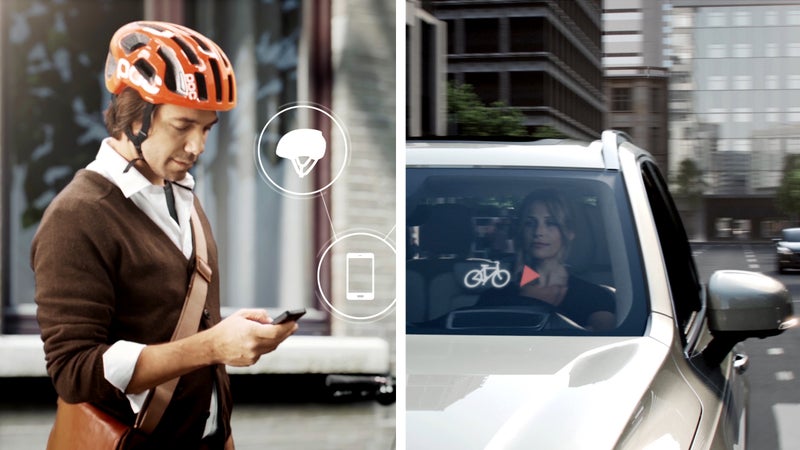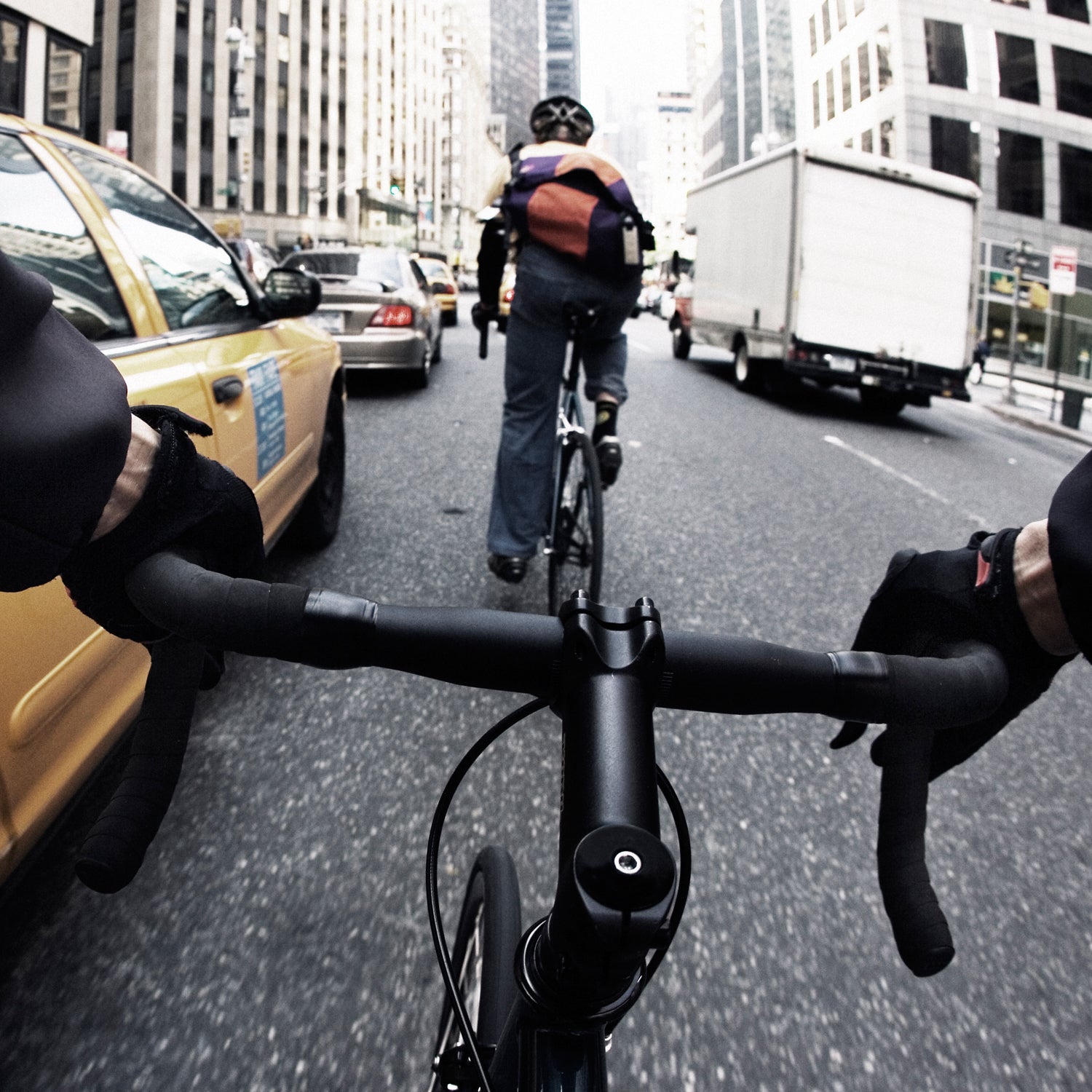You know that old truism that Volvos are the safest cars on the road? For cyclists, that might just be true. Earlier this month, Volvo announced a joint venture with communications giant Ericsson and helmet innovator POC to wirelessly link cyclists and cars in an effort to prevent collisions.
Though the companies won’t release specifics until the Consumer Electronics Show in Las Vegas, Nevada, on January 6, the basics of the system will allow two-way communication between a vehicle and cycling helmet. A GPS-enabled smartphone app will relay the position of the rider to the vehicle by way of the Volvo cloud. At a given proximity, or in the case of an impending collision, both cyclist and driver will be alerted. It wasn’t clear what sort of device will be used in the helmet or how a cyclist will be warned.
As evidence for the need for such a system, Volvo said that collisions with vehicles account for more than 50 percent of cyclist deaths in Europe. And they pointed out that there are more than 50,000 cyclist fatalities and injuries in the U.S. each year.
“By exploring cloud-based safety systems, we are getting ever closer to eliminating the remaining blind spots between cars and cyclists and, by that, avoiding collisions,” says Klas Bendrik, VP and CIO at Volvo Cars.

That might sound like futuristic wishful thinking, but Volvo has a track record with innovative pedestrian safety systems. In 2013, the company began equipping many of its vehicles with its Cyclist Detection program. Combining a radar unit built into the grill of the car and a camera fitted into the front of the center rearview mirror, the system detects bicyclists and pedestrians and, if a collision is imminent, the vehicle .
For this new initiative, Volvo’s is natural. Not only are both companies Swedish (as is Ericsson), but POC has built its brand on safety for adventure athletes. The company was founded on the mandate to “develop protective gear that can save lives and reduce the severity of injuries.” They have been one of the major proponents of MIPS technology and were the first manufacturer to build an into a helmet. And safety is the hallmark of their apparel line, dubbed AVIP for Attention, Visibility, Interaction and Protection, all of which includes high visibility fabrics, reflective swatches, and conspicuous pockets for cyclists’ emergency contact information.
“Our partnership with Volvo…aligns very well with our mission to do the best we can to possibly save lives and to reduce the consequences of accidents for gravity sports athletes and cyclists,” says Stefan Ytterborn, CEO and founder of POC.
In the announcement about the new joint venture, Volvo called fatalities and injuries in traffic unacceptable. The company’s long-term goal is “to build cars that do not crash anymore.”
Imagine the day that a bike manufacturer sets out to build bikes that won’t tip over.


